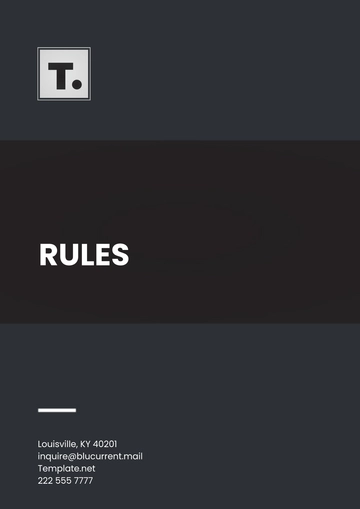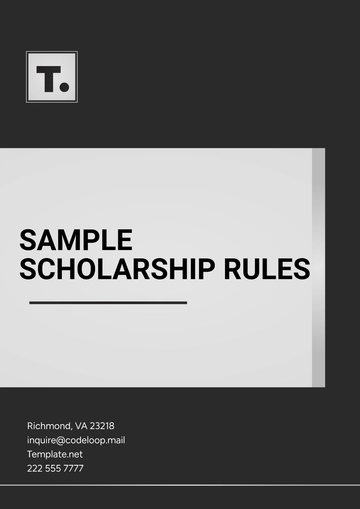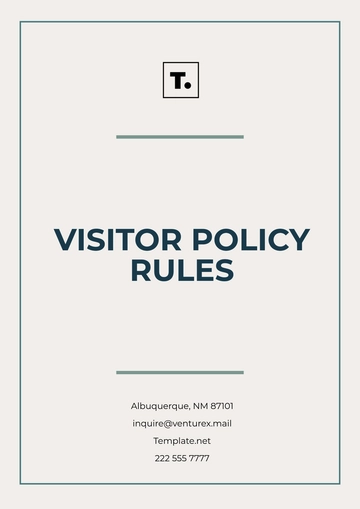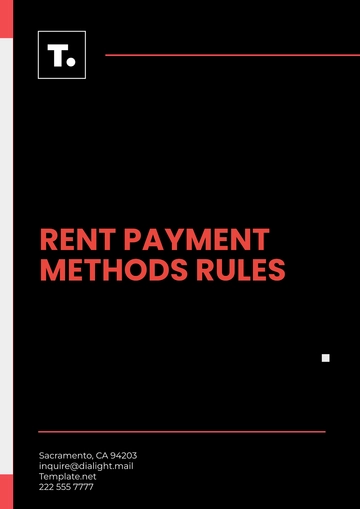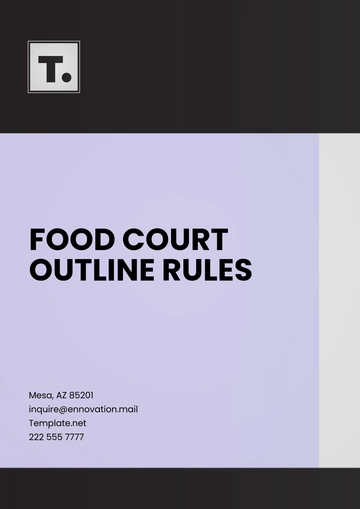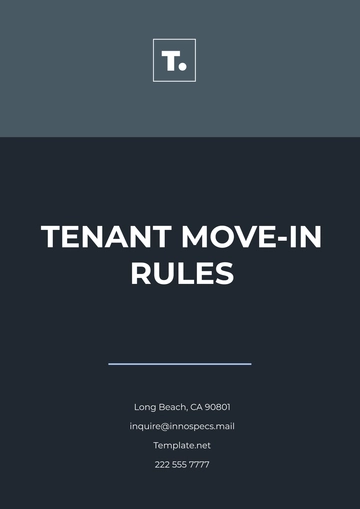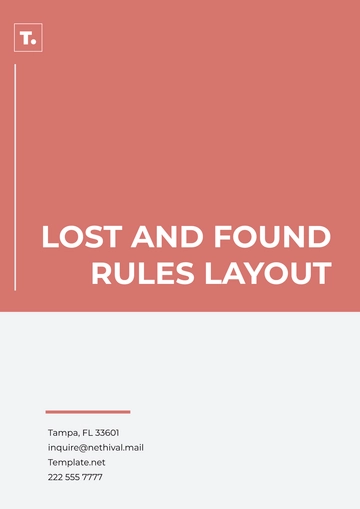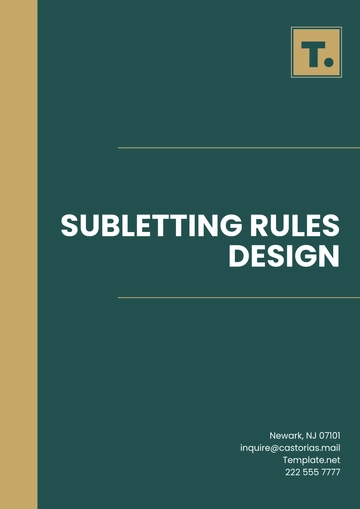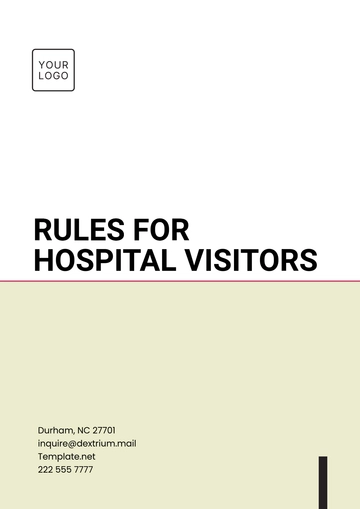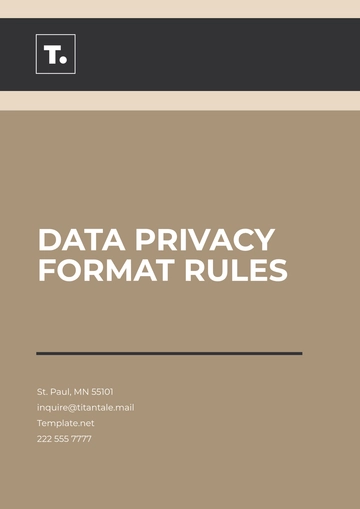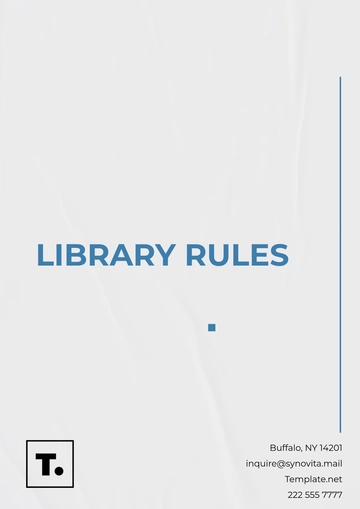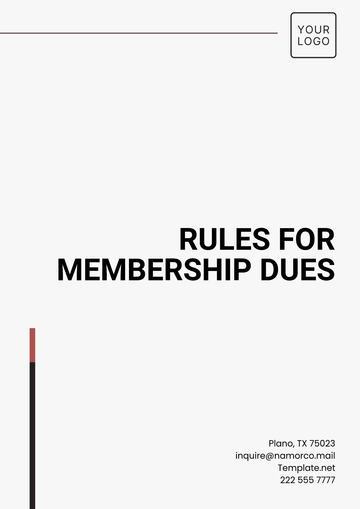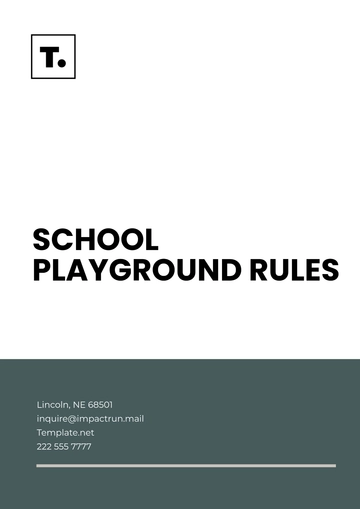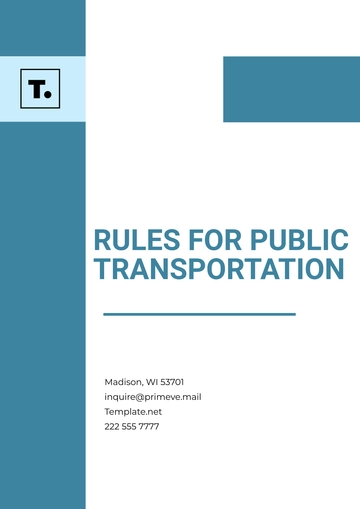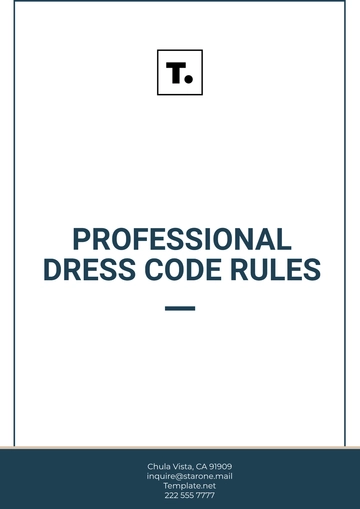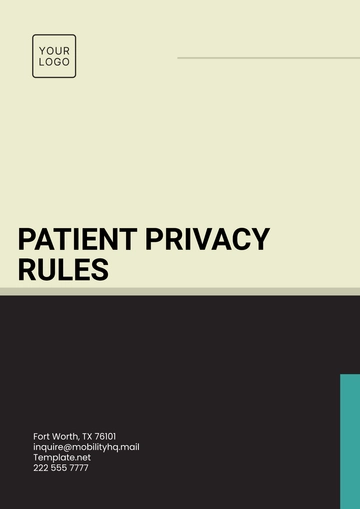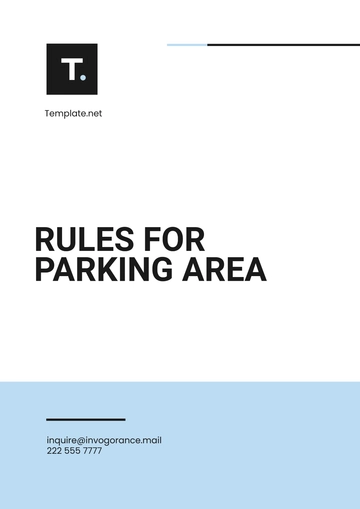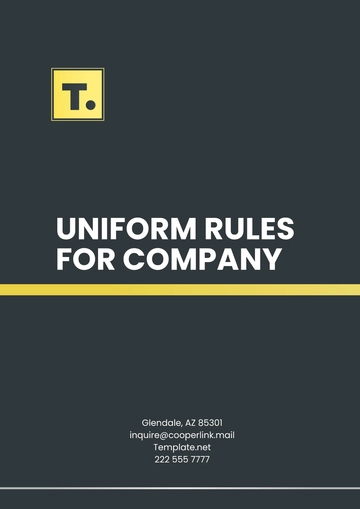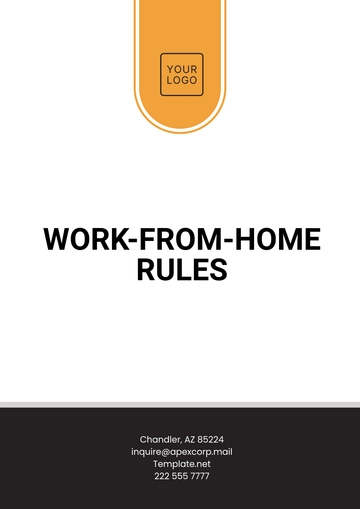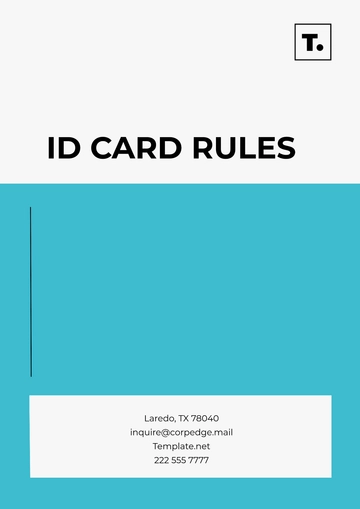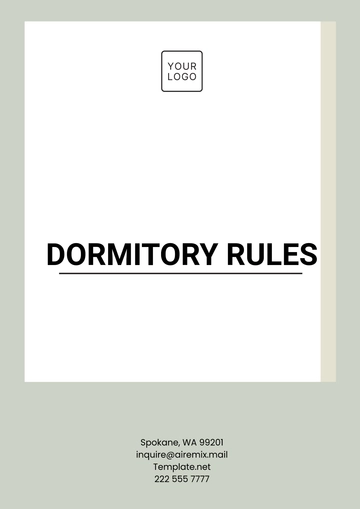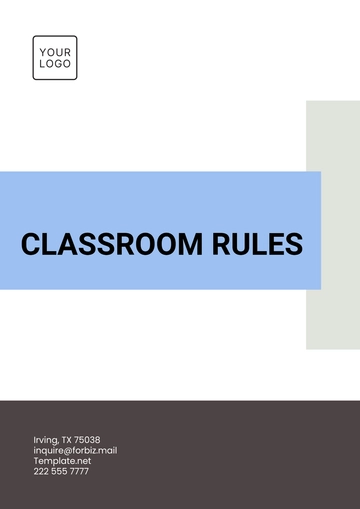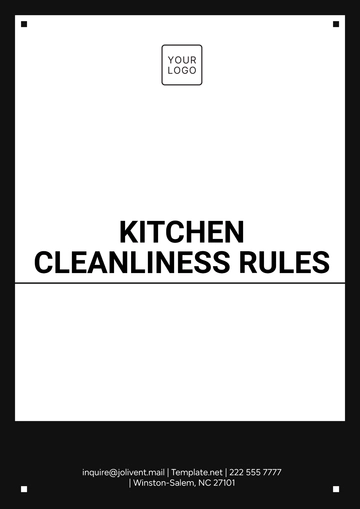Free Annual Inspections Rules
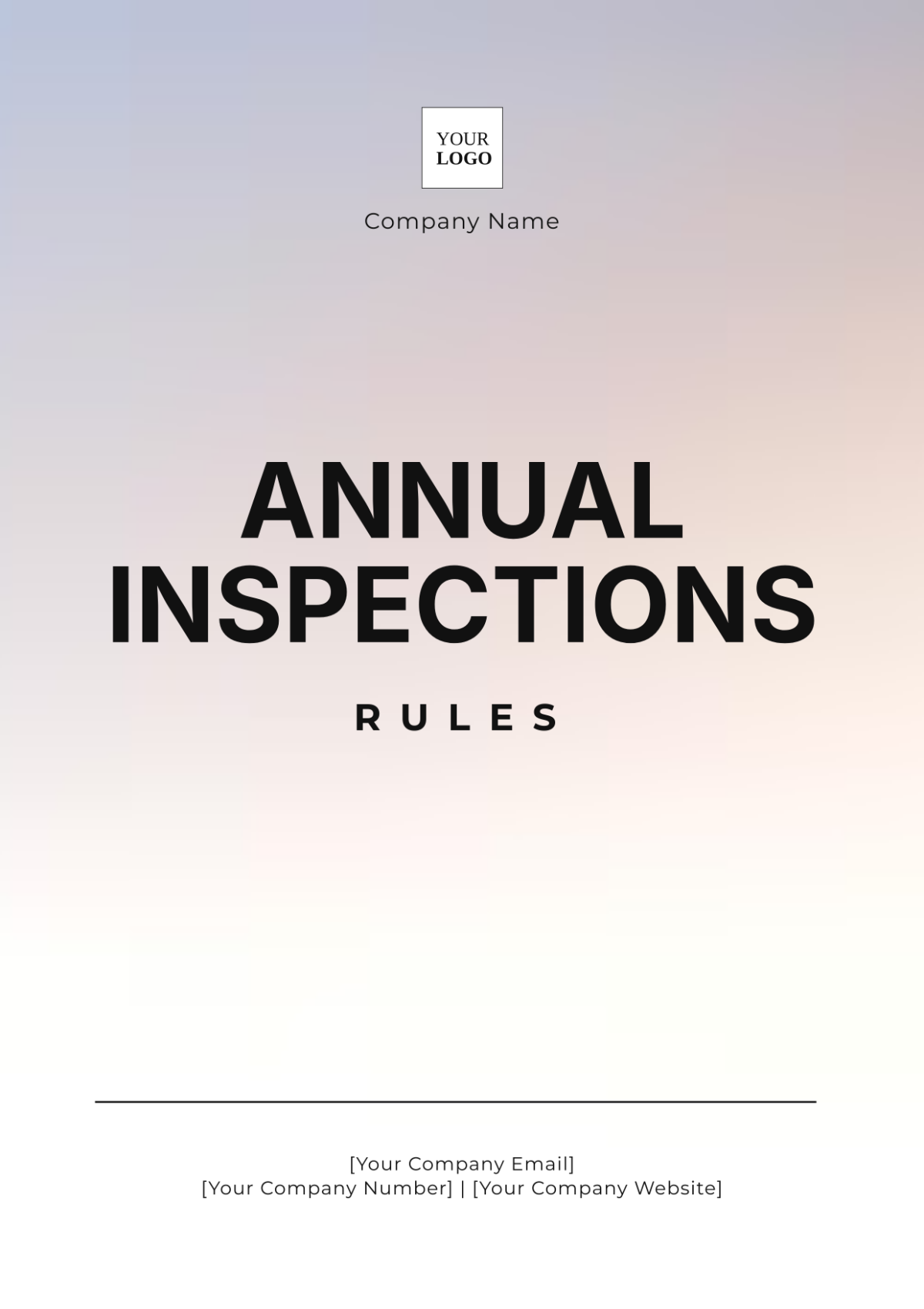
Prepared By: [Your Name]
Introduction
Annual inspections are critical to maintaining the safety, reliability, and operational efficiency of equipment and machinery within any facility. Regular inspections not only ensure compliance with safety regulations but also help prevent accidents, equipment failures, and operational downtime. This document outlines the comprehensive procedures for conducting annual inspections, detailing responsibilities, inspection processes, and the necessary actions for ensuring a safe and compliant working environment.
1. General Requirements
1.1 Scope of Inspections
The annual inspection process covers the following categories of equipment:
Machinery with Moving Parts: This includes all mechanical equipment with moving components, which require regular checks for wear and tear.
Electrical Equipment: Inspection of all electrical systems to ensure proper functioning and compliance with electrical safety standards.
Safety Installations: This includes fire alarms, suppression systems, emergency lighting, and other critical safety infrastructure.
1.2 Frequency of Inspections
Annual Requirement: Inspections must be conducted at least once within every 12 months, starting from the date of the last inspection.
1.3 Responsibility for Inspections
Facility Manager: The facility manager holds the responsibility for scheduling, coordinating, and ensuring that all inspections are completed on time.
2. Pre-Inspection Procedures
2.1 Notification
Advance Notice: All relevant personnel, including operators and safety officers, must be notified at least two weeks before the scheduled inspection date. This allows adequate time for preparation and ensures minimal disruption to operations.
2.2 Documentation Preparation
Gathering of Reports: Collect all previous inspection reports, equipment manuals, and maintenance logs.
Access Preparation: Ensure that necessary access to restricted or sensitive areas is arranged ahead of the inspection.
3. Inspection Process
3.1 Visual Inspection
Damage Check: Inspect equipment for any visible signs of damage, wear, or corrosion.
Safety Installations: Verify that all safety installations, such as fire alarms and emergency exits, are in good condition.
Labeling and Signage: Ensure that all equipment and hazardous areas are properly labeled and that safety signage is visible.
3.2 Functional Testing
Operational Performance: Operate machinery to test its performance under normal and stress conditions.
Electrical Systems Check: Test electrical systems to confirm they are functioning correctly, including circuit breakers, wiring, and grounding.
Safety Devices Testing: Perform tests on safety devices such as fire alarms, emergency stop buttons, and safety interlocks.
3.3 Detailed Review
Maintenance Logs: Review and verify the accuracy of maintenance logs to ensure all required maintenance has been performed.
Instrument Calibration: Check the calibration of instruments and control systems to ensure they are within acceptable tolerances.
Regulatory Compliance: Ensure all equipment meets current safety regulations and standards.
4. Post-Inspection Procedures
4.1 Reporting
Comprehensive Report: Compile a detailed inspection report, including all findings, identified deficiencies, and recommended corrective actions. The report should be distributed to relevant stakeholders, including management and safety officers.
4.2 Rectification of Deficiencies
Timely Correction: All identified issues must be addressed within a maximum of 30 days from the inspection date. Failure to do so may result in penalties or operational restrictions.
4.3 Record Keeping
Document Retention: Maintain all inspection reports and related documentation for a minimum of five years.
Maintenance Log Updates: Update maintenance logs to reflect the inspection outcomes and any corrective actions taken.
Rectification Documentation: Record all actions taken to rectify identified deficiencies, including dates and responsible parties.
5. Compliance and Enforcement
5.1 Compliance Monitoring
Regular Audits: Conduct periodic audits to ensure ongoing compliance with inspection procedures and safety standards.
5.2 Penalties for Non-Compliance
Warning System: Issue warnings for first-time non-compliance incidents.
Fines and Sanctions: Impose fines for repeated offenses or serious breaches of inspection protocols.
Equipment Shutdown: In cases of severe non-compliance, equipment may be shut down until all issues are resolved.
6. Training and Certification
6.1 Inspector Qualifications
Certification Requirement: Inspectors must possess relevant certifications and be qualified to conduct thorough inspections in their area of expertise.
Ongoing Training: Inspectors must undergo regular training to stay updated on the latest inspection techniques, safety standards, and regulations.
6.2 Personnel Training
Staff Training: All facility staff should receive training on safety standards, the importance of annual inspections, and their role in ensuring a safe working environment.
Awareness Programs: Implement regular awareness programs to reinforce the significance of compliance with inspection procedures.
- 100% Customizable, free editor
- Access 1 Million+ Templates, photo’s & graphics
- Download or share as a template
- Click and replace photos, graphics, text, backgrounds
- Resize, crop, AI write & more
- Access advanced editor
Ensure smooth property management with Template.net's Annual Inspections Rules Template. This editable and customizable template details the scheduling, scope, and procedures for annual property inspections. Editable in our AI Editor Tool, it helps establish clear guidelines for conducting inspections, maintaining property standards, and communicating effectively with tenants about inspection protocols and requirements.
